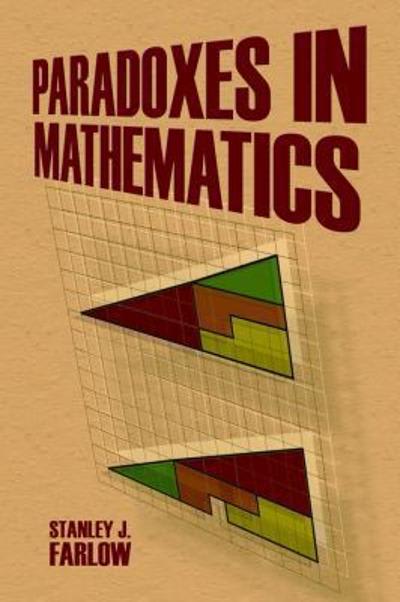Question
My Question: What sources can I use to find the same answers that the expert used in this reply? I would like to attain sources
My Question: What sources can I use to find the same answers that the expert used in this reply? I would like to attain sources that will give me the equation on how to solve these answers as well. Thank you. Previous Question and Answer Below:
Subject:Math - Other
Another important measure of how an economy is performing is the unemployment rate. But there is more to the unemployment rate than just the headline rate reported on the news.
In particular we are going to look at the U3 rate (the Headline rate), the U6 rate and the labor force participation rate.
Go to theBureau of Labor Statistics https://www.bls.gov/]
On their home page from the menu on the top of the page click on "Economic Releases", choose "Latest Releases", click on "Employment Situation", and than on " Employment Situation Summary". Read the report. Then using the tables linked from the bottom of the report find:
The U3 rate;
The U6 rate; and,
The labor force participation rate.
What are the differences among these measures? Note the percentages of each, what each measure includes and then express your views on what factors may be causing the U6 rate to be roughly twice the U3 rate and what may be causing the decline in the labor participation rate? Is the headline rate used by the most news report misleading?
For your information, here is a summary of the six unemployment measures.
- U-1, persons unemployed 15 weeks or longer, as a percent of the civilian labor force;
- U-2, job losers and persons who completed temporary jobs, as a percent of the civilian labor force;
- U-3, total unemployed, as a percent of the civilian labor force (this is the definition used for the official unemployment rate);
- U-4, total unemployed plus discouraged workers, as a percent of the civilian labor force plus discouraged workers;
- U-5, total unemployed, plus discouraged workers, plus all other marginally attached workers, as a percent of the civilian labor force plus all marginally attached workers; and
- U-6, total unemployed, plus all marginally attached workers, plus total employed part time for economic reasons, as a percent of the civilian labor force plus all marginally attached workers.
Your question has already been answered
Answerand Explanation
Solved by verified expert
U-3 Unemployment rate = Total unemployed / Civilian labor force
= 5753 / 164556
= 3.49 %
U-6 Unemployment rate = Total unemployed + Marginally attached workers + Total employed part-time / Civilian labor force + Marginally attached workers
= 5753 + 1200000 + 4100000 / 164556 + 4100000
= 5305753 / 1364556
= 3.89%
Labor force participation rate = Civilian labor force / Civilian non-institutional population
= 164556 / 260181
= 63.2 %
Step-by-step explanation
Unemployment rate is an important economic measure to gauge the economic state and performance of the economy. It can be calculated by various methods. There are six different unemployment measures to calculate the unemployment rate.
The Labor force participation rate is the measure of an economy's active workforce. It is calculated by dividing the sum of all workers who are employed or actively seeking employment by the total non-institutionalized civilian working age population.
The unemployment measure U-3 is calculated as total unemployed divided by the civilian labor force. It is the widely used unemployment rate and is considered as an official unemployment rate.
The unemployment measure U-6 is calculated as total unemployed plus all marginally attached workers plus total employed part-time for economic reasons divided by the civilian labor force plus marginally attached workers.
According to the data given in the "Employment Situation Summary" on the website of Bureau of Labor Statistics, we can find these different unemployment rates for December 2019.
The following data is given:
Total unemployed = 5753
Civilian Labor force = 164556
Marginally attached workers = 1.2 million (These are the individuals who are not in the labor force and had looked for the job sometime in the prior 12 months)
Total employed part-time = 4.1 million (These are the individuals who preferred full-time employment but were working part-time because their hours has been reduced or they were unable to find full-time jobs)
U-3 Unemployment rate = Total unemployed / Civilian labor force
= 5753 / 164556
= 3.49 %
U-6 Unemployment rate = Total unemployed + Marginally attached workers + Total employed part-time / Civilian labor force + Marginally attached workers
= 5753 + 1200000 + 4100000 / 164556 + 4100000
= 5305753 / 1364556
= 3.89%
Labor force participation rate = Civilian labor force / Civilian non-institutional population
= 164556 / 260181
= 63.2 %
The U-3 unemployment rate is the most commonly reported rate which we see in news headlines which includes only the number of people who are actively seeking a job to be a part of labor force. The U-6 rate includes discouraged, underemployed as well as unemployed workers in the economy.
The U-3 unemployment rate is criticized to be too simple and is believed that it does not represent the true picture of the economy. This is the reason it can be asserted that headline rate used by most news reports can be misleading.
The U-6 unemployment rate is a much broader measure as it includes part-time workers and discouraged workers as well who has looked for job anytime in past 12 months. This is the reason why U-6 unemployment rate will always be more than the U-3 unemployment rate.
Step by Step Solution
There are 3 Steps involved in it
Step: 1

Get Instant Access to Expert-Tailored Solutions
See step-by-step solutions with expert insights and AI powered tools for academic success
Step: 2

Step: 3

Ace Your Homework with AI
Get the answers you need in no time with our AI-driven, step-by-step assistance
Get Started


